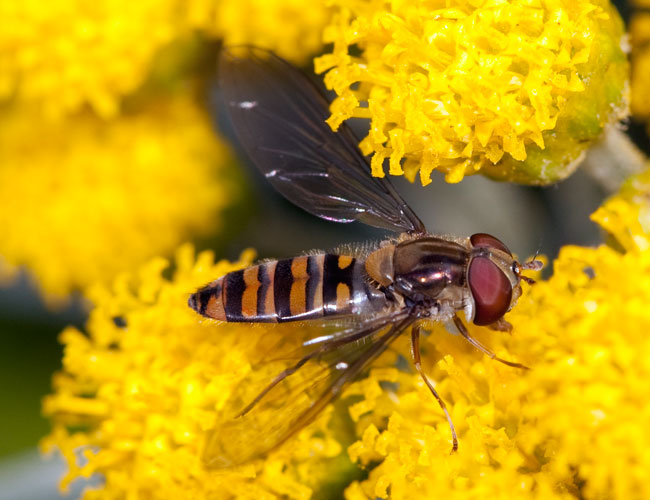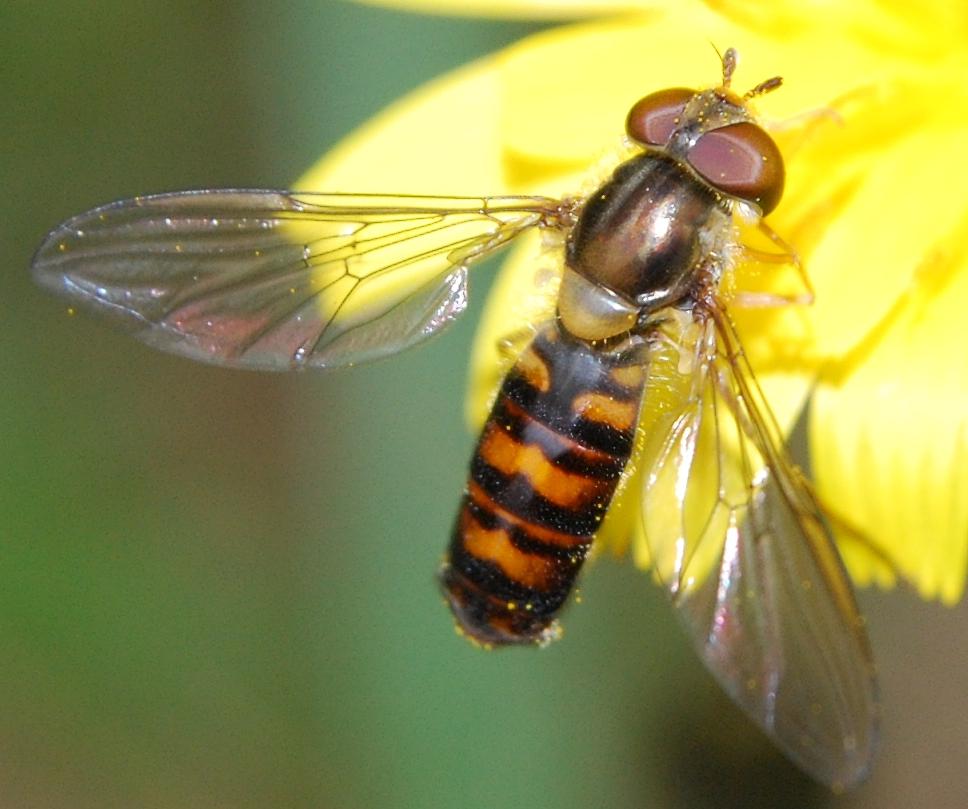Diptera.info :: Family forums :: Syrphidae
Who is here? 1 guest(s)
|
colour and season
|
|
| brigitteu |
Posted on 31-10-2009 10:17
|
|
Member Location: Switzerland Posts: 895 Joined: 08.07.09 |
thought to sight more E. balteatus with diffrent colours on abdomen on late autumn and in early spring (white, yellow, black). In summer - I believe - there were more "yellow/black" . What experience do you have concerning colour and season? Is there any difference? Or does exists this wide range in each season? Please forgive me for my curious question. first pic: E.balteatus, summer, 29.07.09 second pic: E.balteatus, autumn, 20.10.09 Would be nice if anybody could tell me of his experience . . .  Thanks and regards, Brigitte brigitteu attached the following image:  [67.05Kb] Edited by brigitteu on 31-10-2009 10:20 |
|
|
|
| brigitteu |
Posted on 31-10-2009 10:19
|
|
Member Location: Switzerland Posts: 895 Joined: 08.07.09 |
autumn
brigitteu attached the following image:  [69.08Kb] |
|
|
|
| zhengxialin |
Posted on 01-11-2009 03:42
|
|
Member Location: Guangxi, China Posts: 239 Joined: 05.04.09 |
A nice pic, but i don't know its ID |
|
|
|
| viktor j nilsson |
Posted on 01-11-2009 12:40
|
|
Member Location: Gothenburg, Sweden Posts: 203 Joined: 25.02.08 |
Hi, in for example Stubbs & Falk, they mention that "Others, such as E.balteatusm show a range of colour forms from very light to very dark; observations suggest that pale forms are most often seen in hot summers and dark ones under colder conditions, as if temperature is playing a role. Dusek & Láska (1974) have shown that the temperature during pupal development does indeed affect the extent of dark markings in E.balteatus and other Syrphini. Dusek & Laska, 1974: Influence of temperature during pupal development on the colour of syrphid adults (Syrphidae, Diptera). Folia Prirod. Fak. Univ. Purkyne. 15: 77-81 |
|
|
|
| brigitteu |
Posted on 01-11-2009 20:04
|
|
Member Location: Switzerland Posts: 895 Joined: 08.07.09 |
@ Xhengxialin: Thanks, the ID is "Episyrphus balteatus" @ Viktor: thank you for this detailed information! I felt the other way round with dark and light :-) but the main content still is, that temperature is playing a role. I will gave attention for the different colours next year again. It's an interresting aspect. |
|
|
|
| Lukasz Mielczarek |
Posted on 01-11-2009 22:21
|
|
Member Location: Poland, Krakow Posts: 498 Joined: 27.09.06 |
Episyrphus balteatus 14.09.09 Poland, Wloszczowa
Lukasz Mielczarek attached the following image:  [72.3Kb] |
|
|
|
| Robert Zoralski |
Posted on 28-11-2009 17:51
|
|
Member Location: Gdansk, Poland Posts: 173 Joined: 20.08.06 |
See: Gilbert, F., The evolution of imperfect mimicry in hoverflies, 2005 http://eprints.nottingham.ac.uk/96/1/ImperfectMimicry.pdf You can find there some information about darker speciments on autumn in this publication: 1. Darker specimens could be the result of thermoregulatory abilities developed on the evolution 2. Developing yellow pigments requires more nitrogen and it is the limiting factor for most animals. "The development of perfect mimicry might compromise thermoregulatory abilities, placing constraints on the evolution of colour patterns: Heal (1981, 1989) put this forward as an explanation of Eristalis colour patterns, subsequently followed by others. In both sexes, individual and particularly seasonal variation in the pattern generated by the way the pattern responds to rearing temperature has usually also been interpreted as adaptations to thermal balance (e.g. in Holloway, 1993; Ottenheim et al., 1998), since darker insects are active in cooler weather." "It may be difficult in resource terms to make the appropriate pigments for creating mimetic patterns. The black colours of syrphids are presumably created from eumelanin, a nitrogen-containing compound present as granules in the exocuticle (Chapman, 1998: 660). The yellows are probably xanthopterins (heavily nitrogenized compounds made from the nucleotide guanosine) synthesized in the epidermis, as in the wasp models. For there to be a cost of producing a mimetic pattern, it must be more costly to produce xanthopterins than melanins (since an all-black hoverfly is not mimetic); while a single molecule of xanthopterin has similar numbers of carbon, hydrogen and oxygen atoms to a single molecule of the quinone monomer of melanin, it has five times the number of nitrogen atoms. Thus it is possible that the yellow colours of hoverfly mimics are costly to the nitrogen budget; according to White (1993) nitrogen is the limiting factor for most animals. However, it is not the case that good-quality mimics have more yellow than poor-quality ones – it is the distribution of the yellow that matters." Best Regards Robert Edited by Robert Zoralski on 28-11-2009 17:54 |
| Jump to Forum: |













